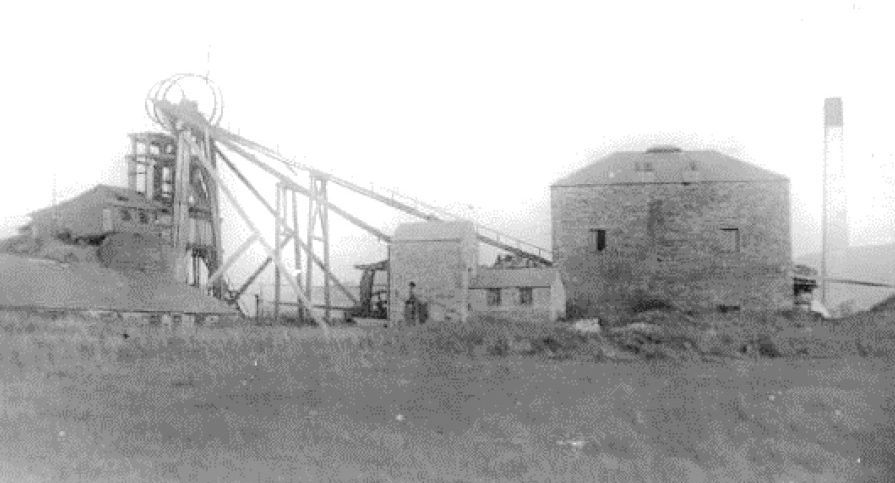This pit was sunk between 1847 and 1849 by Messrs. Vivian and Sons to feed the Taibach Copper Works.
Two shafts were sunk; the Grange Pit was the downcast ventilation shaft and used for winding and pumping. It was 400 yards deep. This shaft was elliptical in shape but its size varied tremendously but averaged 10 feet by 8 feet.
The Albert Pit was 300 yards away and the upcast ventilation shaft. It was 200 yards deep. It varied in thickness the minimum being 8 feet diameter. In 1880 ventilation for this colliery was by a 40 feet diameter Waddle type fan.
On the 28th of July 1885, Evan Evans aged 22 years and a collier was killed when crushed by trams. In 1887 the colliery was working the Bushy seam. In 1878/84 it was managed by T. Gray, in 1887 by Richard Evans, in 1893 by Thomas Gray and in 1913 by Major T. Gray. 261 men were employed underground and 64 men on the surface in 1896 when still managed by Thomas Grey.
In 1907, it was managed by Thomas Barrass and employed 214 men working underground in the Cribbwr and Four-Feet seams and 58 men at the surface in 1913. It closed on the 10th of October that year. At that time its workings were well under the sea.
The colliery worked the North Fawr, South Fawr, Six-Feet, Three-Feet, Nine-Feet, Five-Quarter and Cribbwr seams; and worked the Clay seam between 1854 and 1865. The Nine-Feet was abandoned in May 1911, and the Four-Feet in April 1913.
- 1889: Output:65,000 tons
- 1894: Output:100,000 tons
- 1896: Manpower: 235
- 1899: Manpower: 367
- 1900: Manpower: 386
- 1901: Manpower: 394
- 1902: Manpower: 384
- 1903: Manpower: 280
- 1905: Manpower: 320
- 1907: Manpower: 262
- 1909: Manpower: 312
- 1910: Manpower: 199
- 1911: Manpower: 293
- 1912: Manpower: 294
- 1913: Manpower: 270
Morfa Colliery is now buried under the vast sprawl of the Steel Works at Margam. In its day it was a stand out colliery in the South Wales Coalfield; it was one of the few to work under the sea, and one of the few to fairly successfully work the difficult geology of the southern outcrop. It was the largest colliery in the area producing 190,000 tons of coal in the year 1863 which was a very significant amount in those days, it also appears to have been the most superstitious mine in the South Wales Coalfield.
Yet what it is remembered for is the number of explosions at this colliery, a record that is possibly only outdone by Risca Black Vein Colliery. The mine was known to give off gas and was known as a fiery mine that required great care in its working. The colliery employed hundreds of men and boys and the underground workings extended for miles. It raised six hundred tons of coal a day which was shipped to Port Talbot, Neath, Britain Ferry or Swansea. The coal was bituminous coal and the highly prized Welsh Steam Coal.
Everything that could have been done was done in the interests of safety and no expense was spared by the proprietors. There had been only two fatal accidents in the past ten years before this explosion.
Around midnight on the 26th of November 1858, four men died in a limited explosion. The top of one safety lamp had been unlocked and removed and was the cause of the explosion. The bodies weren’t found until the overman made a routine inspection later in the shift. Those that died were; Aaron Charlton aged 38 years with a wife and three children. Isaac Griffiths, a single man, aged 25 years. David Hughes married with two children and William Williams, a single man.
Further explosions occurred at this pit in 1863, 1870 and 1890 claiming 39, 30 and 81 lives respectively. Full reports on these disasters can be found by following the links below:
This information has been provided by Ray Lawrence, from books he has written, which contain much more information, including many photographs, maps and plans. Please contact him at welshminingbooks@gmail.com for availability.
Return to previous page

